CLIMATE AND CLIMATE CHANGE FOR KIDS
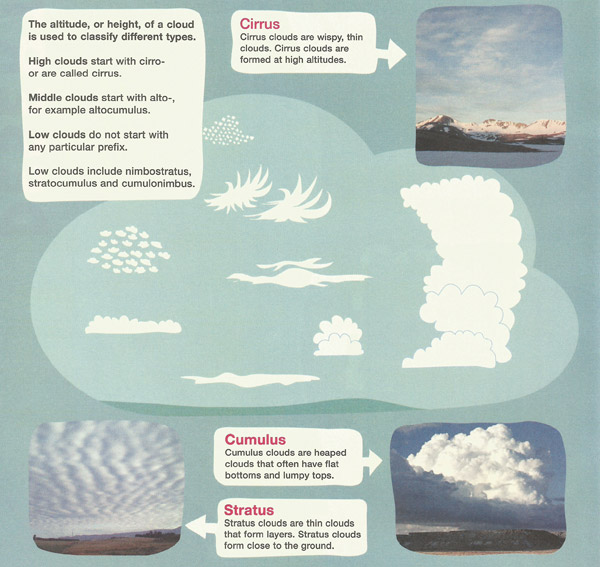
Figure 1. Types of clouds.
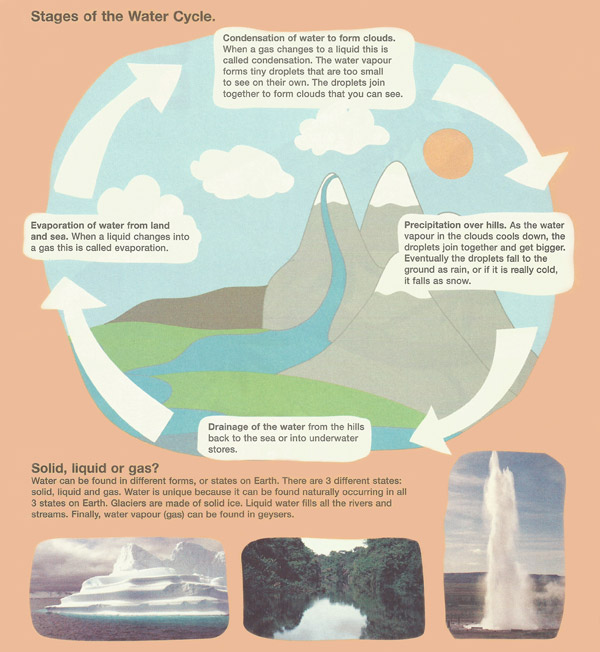
Figure 2. The water cycle.
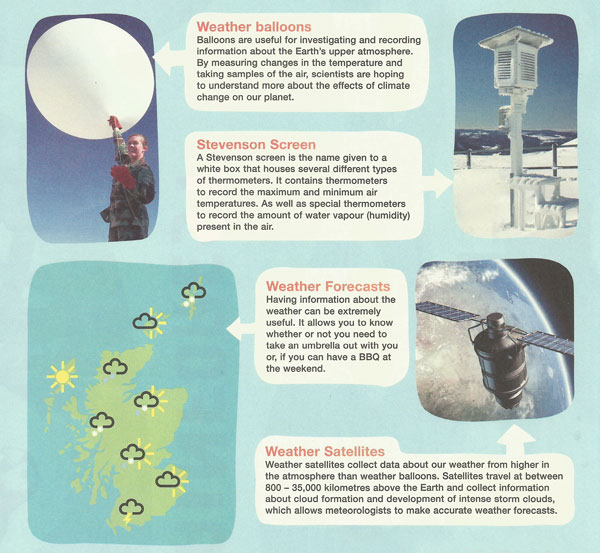
Figure 3. Weather stations.
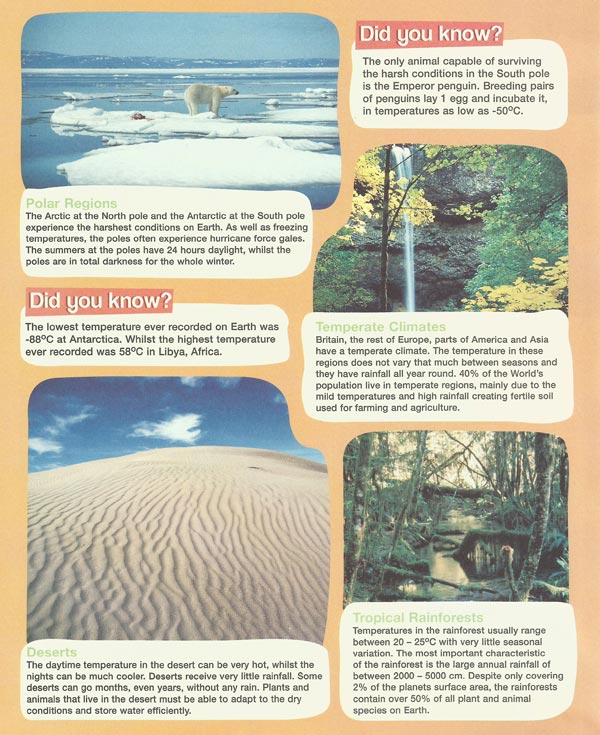
Figure 4. Regions of Earth.

Figure 5. Effects of climate change.
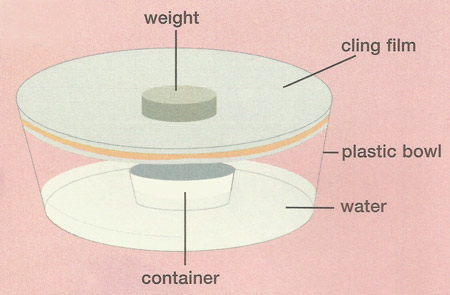
Figure 3. Water cycle experiment.
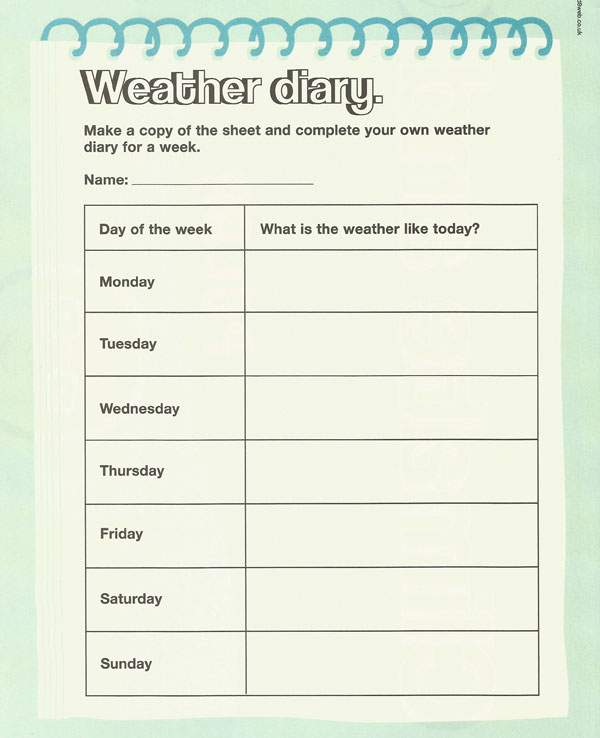
Figure 7. Weather diary.

Sponsors.
Clouds
The name given to a cloud is based on three different properties: the shape, the altitude, and whether or not it is a rain cloud (see Figure 1). Not all clouds bring rain. Nimbus means rain, so cumulonimbus brings showers of rain, hail, or snow. In contrast, cumulus clouds are associated with fine weather.
What shapes can you see in the clouds? Next time it is a cloudy day, look up and see what pictures you can make out of the clouds.
The Water Cycle
70% of the surface of Earth is covered by water. The majority of this water salty, with only small amount of fesh water. This fresh water is used by all the plants and animals that live on Earth. The fresh water is recycled in a process known as the water cycle (see Figure 6).
Have a go: water cycle experiment
See Figure 3.
What you will need
What you need to do
1. Place the small container in the center of the large bowl
2. Pour a small amount of water into the large bowl. The water level should not be high enough to fill the small container.
3. Cover the bowl with cling film and secure with an elastic band or some string.
4. Place a weight on the center of the film, so that the water can drip into the small container.
5.Leave the bowl on a sunny windowsill and observe what happens to the water.
Observations
What did you see happen to the water? How long did the water cycle take?
Weather stations
Measuring the weather
There are lots of different instruments used to measure and record different aspects of the weather (see Figure 3). It is important to take all these measurements so that scientists can try to spot trends and patterns in our weather. Scientists can then use this information to make predictions about the type of weather we are likely to experience in the future.
The direction and speed of the wind can be measured. If the wind is blowing from the North it generally brings cold air from the Arctic, but if the wind is blowing from the South it brings warm air from North Africa.
Have a go: weather diary
Keep a weather diary, like that shown in Figure 7, for a week. You could record the temperature, measure the rainfall, and observe the different kinds of clouds and the amount of cloud cover in your local area.
Regions of Earth
Refer to Figures 4 and 5 for how climate change may affect various different regions.
